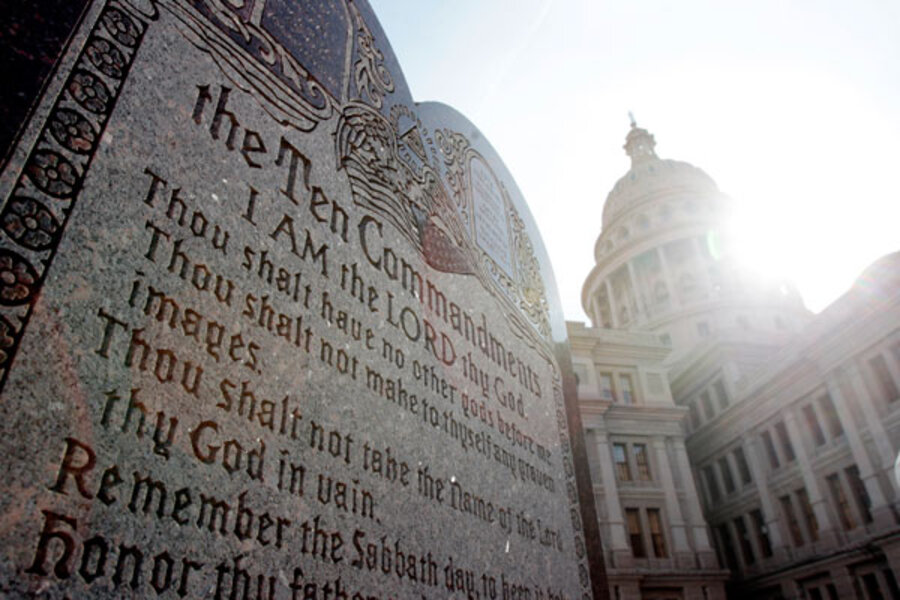Could Satanists get a monument at Oklahoma State Capitol?
Loading...
A group of Satan worshippers says the Oklahoma Legislature's decision in 2009 to allow a privately funded monument to the Ten Commandments on the state capitol grounds means they should have equal access to build a monument of their own.
The Satanic Temple of New York has alerted the Oklahoma Capitol Preservation Commission that it wants to build a $20,000 monument on the statehouse grounds. The temple plans to submit plans this month for a monument that would be in "good taste" – which an official describes as a marker with a pentagram or an interactive display for children, according to the Associated Press.
State Rep. Bobby Cleveland (R) told the AP that the idea was preposterous. "These Satanists are a different group," he said. "You put them under the nut category."
Legal precedent suggests that federal courts might not take the same view – about Oklahoma's Ten Commandments monument or Satanists' claim of equal rights.
In a 2005 case, the US Supreme Court unanimously ruled in favor of Satanists and followers of white-supremacist religions, saying that a federal law designed to protect prisoners' religious liberties protected theirs, too.
Ohio officials had argued that protecting Satanists' religious rights would undermine prison security by drawing more prisoners to that faith. In rejecting the state's argument, Justice Ruth Bader Ginsburg noted that government often makes concessions to accommodate the free exercise of religion, such as allowing Jewish military personnel to wear yarmulkes.
Justice Ginsberg made clear that her ruling dealt specifically with the federal law in question.
In two other cases decided the same year, the Supreme Court issued a split ruling on the specific question of religious monuments on public property.
On one hand, the court decided 5-to-4 that a monument to the Ten Commandments on the grounds of the Texas Capitol could remain. But Justice Stephen Breyer, writing for the majority, noted that the monument had existed for 40 years before eliciting any legal complaint. Moreover, the grounds of the Texas Capitol include a variety of monuments. This, in Justice Breyer's view, made the monument more historical than religious.
"This [Texas] display has stood apparently uncontested for nearly two generations. That experience helps us understand that as a practical matter of degree this display is unlikely to prove divisive," Breyer wrote.
On the other hand, the court decided 5-to-4 that copies of the Ten Commandments on the walls of two Kentucky courthouses ran afoul of the constitutional separation of church and state. In a concurring opinion, Breyer noted that the Kentucky monuments sparked legal action almost immediately.
Similarly, in 2010, the court let stand a lower court ruling that ordered the removal of a Ten Commandments monument from the grounds of a county courthouse in Oklahoma.
The Oklahoma State Capitol's Ten Commandments monument is being challenged in court by the Oklahoma chapter of the American Civil Liberties Union.
Brady Henderson, legal director for ACLU Oklahoma, told the AP: "If the Ten Commandments, with its overtly Christian message, is allowed to stay at the Capitol, the Satanic Temple's proposed monument cannot be rejected because of its different religious viewpoint."







